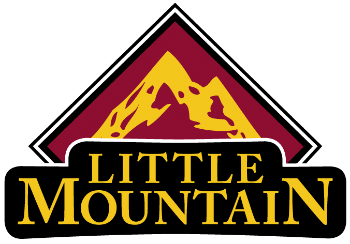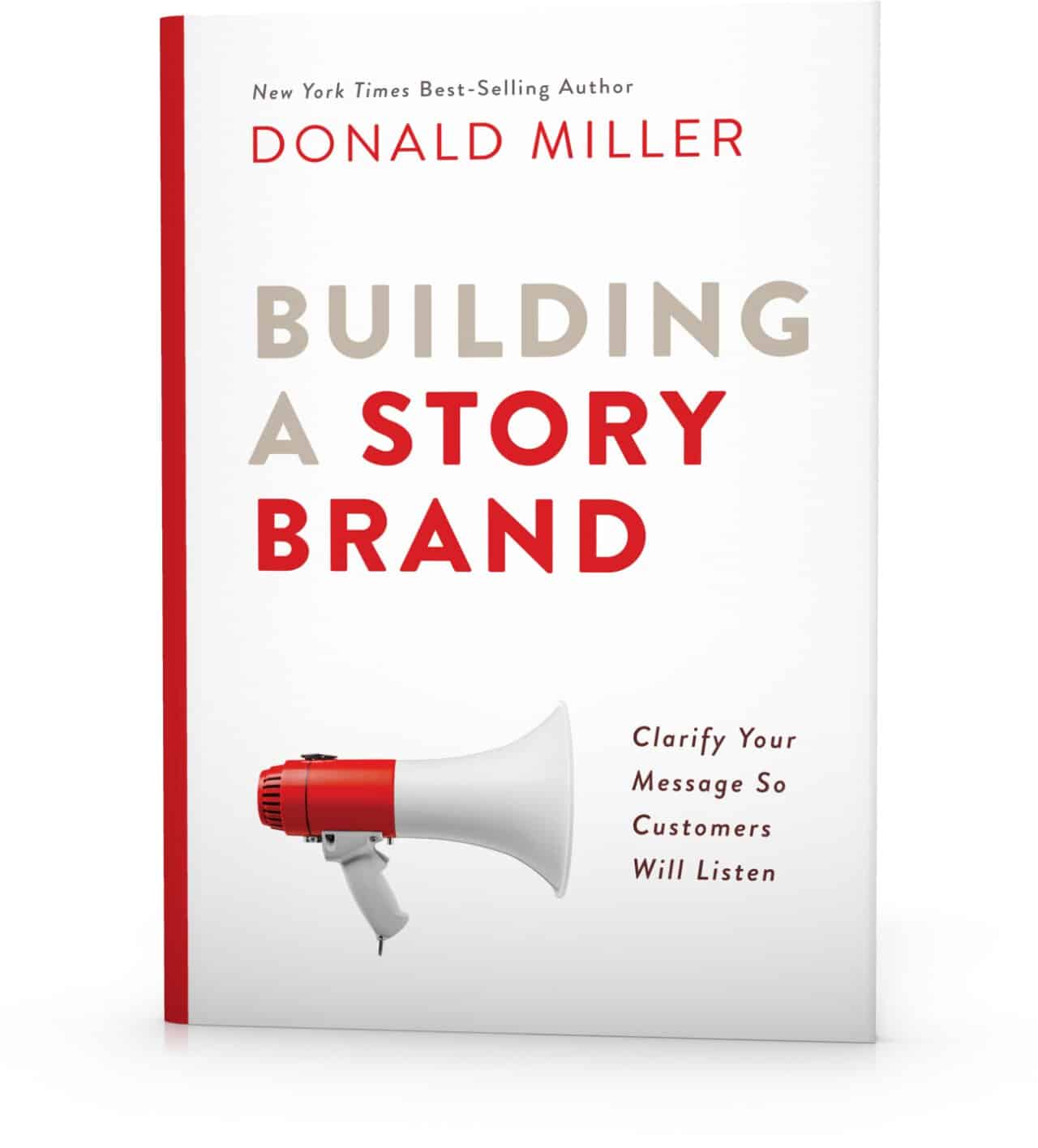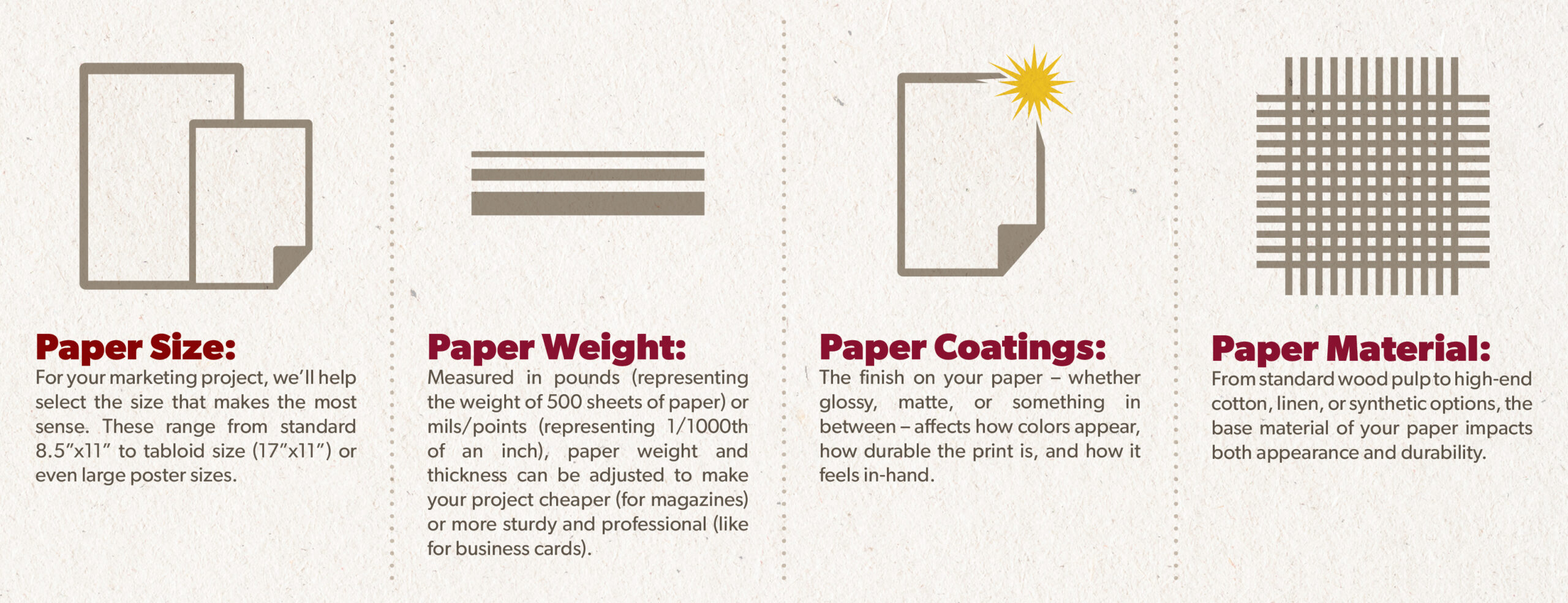Many businesses waste massive amounts of money on marketing.
Maybe you feel that way too about your marketing. You’ve tried ads in different publications. You’ve built a website. You’ve even spent money on a big, beautiful billboard. But you didn’t get the results you were hoping for.
What happened?
Most likely it wasn’t your marketing, but your marketing message that didn’t work.
Meet Jake. He’s the owner of Homeplace Furniture.
When I first met Jake, he immediately told me print advertising doesn’t work for him. After looking over his past ads, I could see why. His message was as clear as the ocean floor during a massive storm … at night … blindfolded. Even worse, everything that could be said about his business was crammed into a tiny ad.
So we simplified his ad to be about one thing, and one thing only. Then we worked out how to express his message in clear, simple language.
Here’s what his new black-and-white ad looked like:
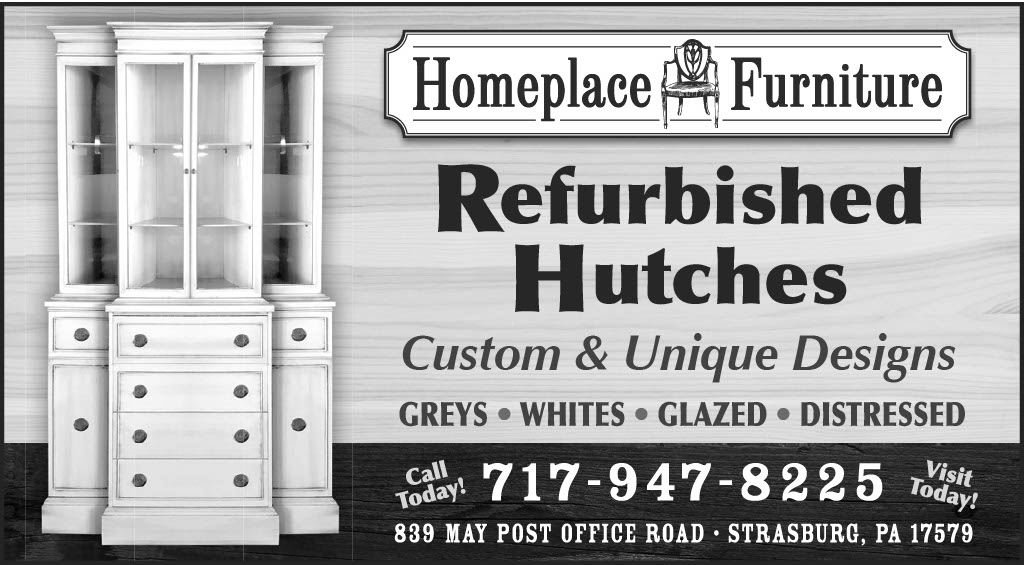
After Jake’s new ad began to run in our Fishwrapper publication he shared this: “For the first time ever, I began to see real results from print advertising. My phones were ringing and people were showing up at my business with their Fishwrapper in hand! Even the ads their team redesigned for me are getting results in other print publications now. I don’t plan to ever quit advertising in the Fishwrapper!”
The key to Jake’s ad doing so well was its clarity.
However for most business owners, figuring out what to say to encourage people to buy is difficult.
Have you ever sat down and struggled with what to say in your ad? What words to use on your website? Or even what to type in an email to close the deal?
Enter StoryBrand.
StoryBrand is a seven-part framework that helps you clarify your marketing message so customers listen.
Table of Contents:
- What is the StoryBrand Framework?
- Example Of A StoryBranded Ad
- A BrandScript Makes It Easy
- One Caveat
- If You Forget Everything, Remember This
What is the SB7 Framework?
The StoryBrand Framework reveals the seven key elements of great storytelling that help you clarify your message so customers will listen.
You could call this a “communication framework.” And talk about best practices, mankind has been telling stories for thousands of years. A good story captivates your attention and keeps you from daydreaming. The same is true when story is applied to marketing.
The StoryBrand Framework works for billion-dollar brands as well as small mom-and-pop businesses. It works for companies based in America, as well as companies in Japan and Africa. Why? Because the human brain is drawn toward clarity and away from confusion. This is a framework to make your message clear.
Don Miller, the creator of the StoryBrand Framework says, “The reality is we aren’t just in a race to get our product to market; we’re also in a race to communicate why our customers need those products in their lives. Even if we have the best product in the marketplace, we’ll lose to an inferior product if our competitor’s offer is communicated more clearly.”
Most marketing doesn’t have anywhere near the impact it could. This is because the marketing message is too complicated. The more simple and predictable the communication, the easier it is for the brain to digest. The StoryBrand 7 Part Framework (SB7) helps because it is a sense-making mechanism. Basically, story formulas put everything in order so the brain doesn’t have to work to understand what’s going on.
If you’re making your customers work to understand what you offer and how it benefits them, you’re losing sales. But if you clarify your message with the right words, people will listen and you’ll do more business.
Let’s jump into the seven parts of the StoryBrand Framework so you can supercharge your marketing today.
Story Overview
A good story boils down to this: A CHARACTER who wants something encounters a PROBLEM before they can get what they want. At the peak of their despair, a GUIDE steps into their lives, gives them a PLAN, and CALLS THEM TO ACTION. That action helps the character avoid FAILURE and ends in a SUCCESS.
The words in bold are the seven parts of a story you need to understand to grow your business, according to Don Miller. Master these like you would seven chords on a guitar, and you’ll make melodious music that will draw customers in.
Let’s take a closer look at the seven parts of a story Don Miller says will grow your business.
A Character
The story is not about you or your brand. The story is about your customer getting what they want.
Think of your customer as the hero of the story. Your brand is the guide that helps the hero win the day. As soon as a brand realizes this, the faster they will grow. Many companies talk about how great they are and how their grandfather started the company… but their customers don’t care. Your customers are only concerned about how you can help them win the day and have a happy ever after.
Run through your marketing materials and cross out everything that talks about you and your story. Then sit down and write out what it is your customer wants. Try to tie what your customer wants to something significant. Does your product or service help your customers save money? Save time? Accumulate resources? Or build social networks?
If you remodel kitchens, you might say: “A Spacious Kitchen You’ll Love Cooking In.”
If you’re a Financial Advisor: “A Retirement Plan You Can Count On.”
At the time of writing this article, CarMax, who has been StoryBranded, has a “Love Your Car Guarantee®” greeting all their customers who land on their homepage. This guarantee communicates to buyers that their car will not be a lemon, and if it’s discovered it is a lemon, customers will be able to return it. Their customers don’t have to worry about spending money on a used car that will have problems down the road. Good job CarMax – that’s exactly what your customers want.
Now it’s your turn. Think of ways your product or service fulfills a desire your customer has. Then put your new message where customers will see it.
Has A Problem
Your business exists to solve problems. The more you talk about your customers’ problems, the more they will listen.
If you met me at a networking event and asked me what Little Mountain Printing does, I could answer with, “Oh, we are a print shop.”
Or I could say, “You know how a lot of businesses are missing key marketing tools and it’s costing them sales? Well, at Little Mountain Printing, we offer marketing tools like postcard mailers, modern websites, custom apparel, and promotional products to keep companies growing.”
Feel the difference? In the second example I mention the problem: missing marketing tools and how that’s costing a business sales. If you owned a company and heard me say that, you’d ask me for one of my business cards so we could connect later on.
Fill your marketing up with talking points that focus on your customer’s problems and your sales will skyrocket.
Not only should you talk about external problems your customer is having, but you should also talk about their internal or even philosophical problems, too.
Continuing with our CarMax example, here’s what their marketing talking points might look like:
External Problem: I need a car.
Internal Problem: I’m afraid the car I buy might be a lemon.
Philosophical Problem: When I step foot onto a used-car lot, I shouldn’t feel like I’m about to tangle with a professional wrestler over the price.
If you were CarMax, you’d create messaging around these three problems and populate all your marketing with it.
By the way, CarMax does focus primarily on their customers’ problems and, in doing so, entered one of the least-trusted industries in America and created a $15 billion franchise.
It’s your turn. Take a moment to write out small statements about the problems you help your customers solve. Then begin putting your new talking points into your marketing.
And Meets A Guide
Remember, you are not the hero of the story. Your customer is.
So what role do you play? Answer: The guide!
In a story, the guide is the strongest character. They’ve already been in the hero’s shoes and won the day. Now they exist to use their expertise to help other heroes win the day, too.
Your job is to play the guide and help your customer win the day.
But how do you let your customers (heroes) know you’re the perfect guide for them?
Two ways: By expressing empathy and demonstrating authority.
Empathy is easy to express in your marketing. Chances are you know full well the pain and frustrations your customers’ are going through. So tell them you know. And tell them you genuinely care.
Empathetic statements start with words like, “We understand how it feels to . . .” or “Nobody should have to experience . . .” or, in the case of CarMax, simply, “Above all, we care about people.” Simple.
To be the guide customers want to work with, you must be able to demonstrate authority. Authority means competence here. Are you qualified to come alongside your customers and help them win the day? If so, tell them.
You can demonstrate your authority through testimonials, awards, and logos of other companies you’ve helped, or even through statistics – like how many satisfied customers you have.
Take a minute to scan your marketing materials and see where you can make empathetic statements that show you care and statements that demonstrate your competence to help your customers win the day.
Who Gives Them A Plan
Thus far you’ve identified what your customers want, the challenges they are having, and you’ve demonstrated your competency and expressed your care. Now what?
It’s time to give your customer a plan.
A plan is a three or four-step process of what it looks like to work with you. And the best part!? It completely alleviates any fear the customer might have and gives them the confidence to move forward with a purchase.
People don’t walk into a fog. If there’s any confusion, people will not respond. But a plan is like the sun when it reaches its zenith: it dispels all the fog. So too, your plan will be like the sun lifting all the fog from the minds of your customers… and you’ll get more sales.
Let’s return to our CarMax example. Today, you can buy a car completely online from CarMax. But buying a car online sounds scary, and it’s a bit confusing on how to go about it – especially if it’s your first time.
CarMax alleviates any fear about how it works with a plan. They’ve titled their plan, “Find the one, but it online.”
According to CarMax’s website, here’s how their plan works:
- Choose
Once you find a car to buy, decide how you want it. We’ll call to talk next steps. - Buy
Fill in your details from home. We provide remote support along the way. - eSign
Once your order is all set, we schedule your delivery or express pickup.
If a customer has any anxiety about buying a car online, this plan dispels it completely. The plan shows how simple it really is to buy a car online.
Now it’s your turn. Break down into three or four steps what it looks like to do business with you.
Put your plan on your website, emails, and print marketing materials.
And Calls Them To Action
Do you believe in your product?
If you know your product works; if it can solve your customers’ problems, then stop being passive; strongly call your customers to action. Tell them boldly to make a purchase.
There’s nothing more caring you could do for your customer than asking them clearly to make a purchase.
We’ve seen companies grow their revenue from just being more bold in calling their customers to action; bold in asking for the sale.
Loads of websites say something like “Learn More” or “Discover.” Those are vague and weak calls-to-action.
Here’s what you want to use instead:
- Order now
- Call today
- Schedule an appointment
- Shop now
- Buy now
- Register today
See how clear and direct those words are?
Where do you need to be more clear and direct in your marketing? Go through your website and marketing materials now and see where you can improve.
That Helps Them Avoid Failure
In a good story, the hero will win the day. But if there were no possibility of losing the day, the story would be boring and the reader would lose interest.
If someone doesn’t do business with you, what could go wrong?
What tragic ending are you saving your customer from?
Think it over and put that in your marketing.
Returning to our CarMax example, here’s what they are saving their customers from:
- Getting ripped off by a used-car salesman
- Being stuck with a lemon
- Feeling taken advantage of
Don Miller explains that this category, unlike the other categories, can be overdone. The failure category of story is like salt in a recipe: you only need a little. Too much, and your messaging won’t be appetizing.
Go ahead and brainstorm the negative consequences you are helping your customer avoid. Then like salt, put a pinch into your marketing recipe for good flavor.
And Ends In A Success
This is my favorite category of the StoryBrand Framework. Language from this category of storytelling paints the picture of the promised land.
What will life look like for your customers after they purchase from you?
Tell them in vivid detail.
Miller writes, “If you sell rugs, a successful resolution might be a beautiful floor or a room that finally feels finished. If you sell ice cream, a successful resolution might be a rich, creamy taste of heaven. Camping gear? An adventure to remember.”
The important idea here is we need to show repeatedly how our product or service can make somebody’s life better.
This will be the easiest section for you to brainstorm ideas of what to say.
If the failure section is like salt in the story recipe, the success section is the flour. Pour as much language from this section into your marketing as possible.
Take 10 minutes to write out a few bullet points for this section now.
Example Of A StoryBranded Ad
With these seven categories filled out, you’ll never wonder what you should say in any of your marketing. If you follow this recipe, your marketing will be easy and it will work.
If you’ve been inspired by this article, please go and buy Don Miller’s book “Building A Story Brand” today.
Dave Ramsey said of this book, “This is the most important business/marketing book of the year. All communicators know the power of Story. Donald Miller has captured the process to make your marketing pierce the white noise of the most overserved marketing generation in history. You have to read this book!”
We’ve seen firsthand how powerful the framework is. Here’s one of the first ads of our own we applied the framework to:
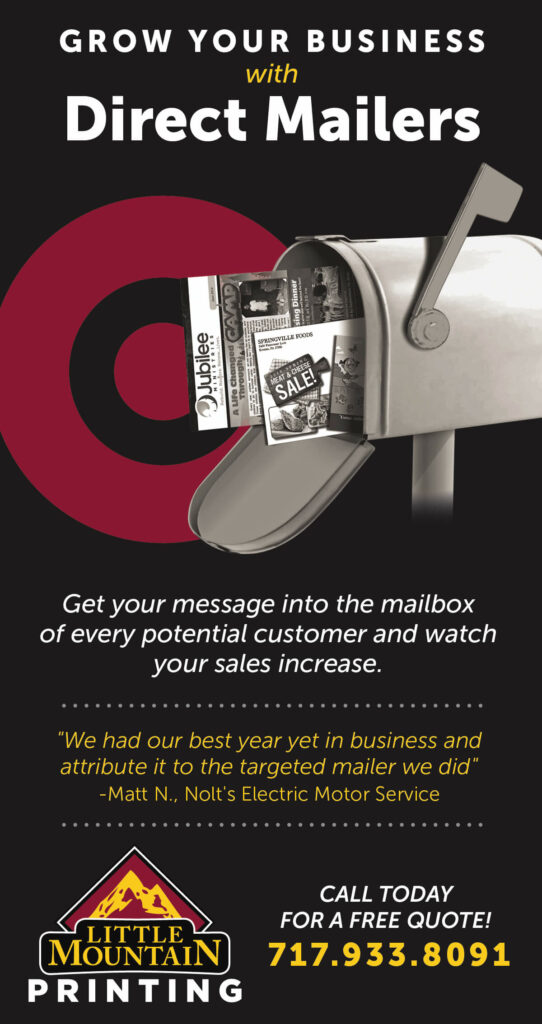
After only a few days of that ad running, our Vice President chatted me this message: “Don’t know what was different about the PCBE ad on targeted direct mail, but I think I have gotten 10 calls from that ad in the last 3 days. So far, it has proved promising.”
And what’s remarkable is the actual version of the ad above had a graphic issue when it was printed. But because the marketing message was so clear, the ad performed well anyway.
That’s the power of getting the words right.
You can have powerful results from your marketing too. If you’ve struggled to get results from your marketing, remember, it may just be your marketing message that needs refinement. Harness the power of story through this proven framework and your business will accelerate like a rocket.
The StoryBrand Brandscript Makes It Easy
Not only did Miller write the marketing book of the year, but he also made a simple tool to help you get your marketing message clear.
It’s called the StoryBrand Brandscript.
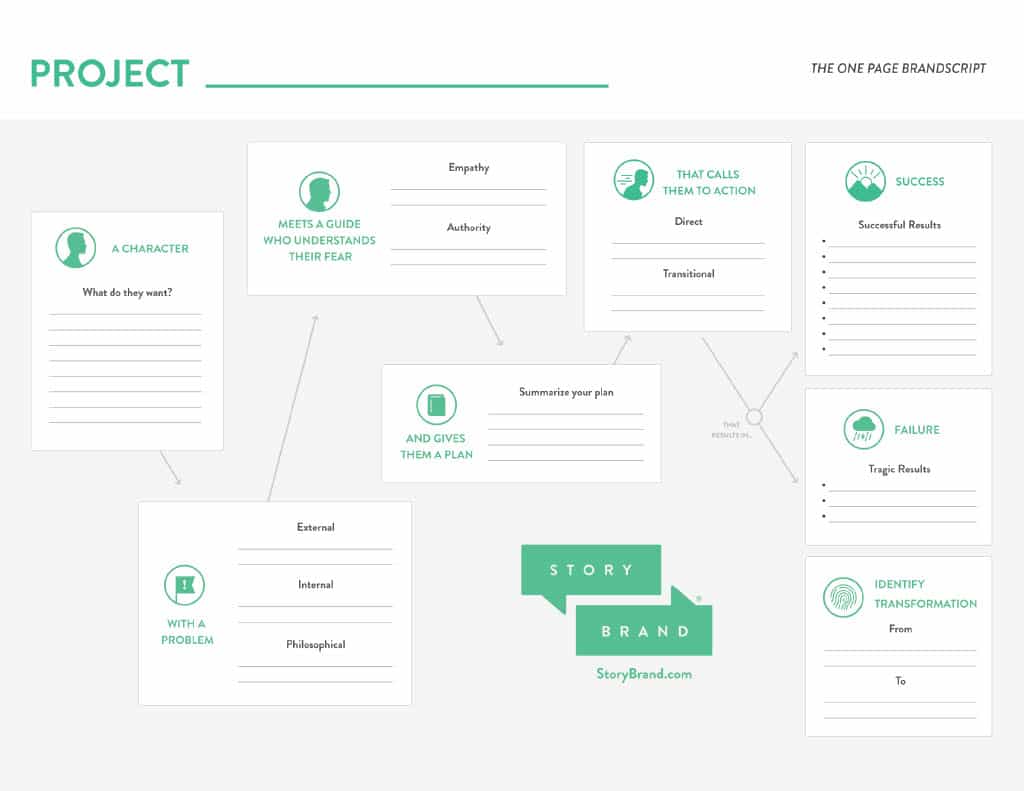
Access it for free over at mystorybrand.com. Once you fill it out, you’ll have your entire marketing message on one page.
One Minor Caveat
Storybrand puts a major focus on using happy, smiley people in pictures you use for marketing. We wholeheartedly agree. But use common sense. If you’re a landscaper, not all your photos should be people with big smiles; some of them need to be before and after photos to show the effectiveness of your treatments. Software companies need plenty of screenshots showing how their software works, as well as video.
Storybrand is an amazing tool in your marketing toolbox. But like any tool, use it with a bit of common sense.
If You Forget Everything In This Article, Remember This
Any advertisement must answer at least these three questions:
- What do you do?
- How does it benefit the customer?
- What does the customer need to do to start the buying process?
These are the three questions every customer who looks at your ad wants to know. Everything else is pie.
Get out there and tell the world how you can solve their problems.
Thank you for what you do in our communities by running a business.
You’re doing noble work by providing jobs, putting food on the table, and making the world a better place.
Keep at it!
Once your messaging is clear, Little Mountain Printing will help you share it with the world
After you clarify your marketing message, you’ll want to share it with everyone. At Little Mountain Printing, we’ll help you communicate your clear message through print, modern websites, custom apparel, and promotional products to keep your business growing.
Reach out for all your marketing needs. We can’t wait to serve you.
Important Links
- StoryBrand Book
- Free BrandScript
- StoryBrand also puts out two podcasts: Business Made Simple & Marketing Made Simple. You can listen wherever you listen to podcasts.
